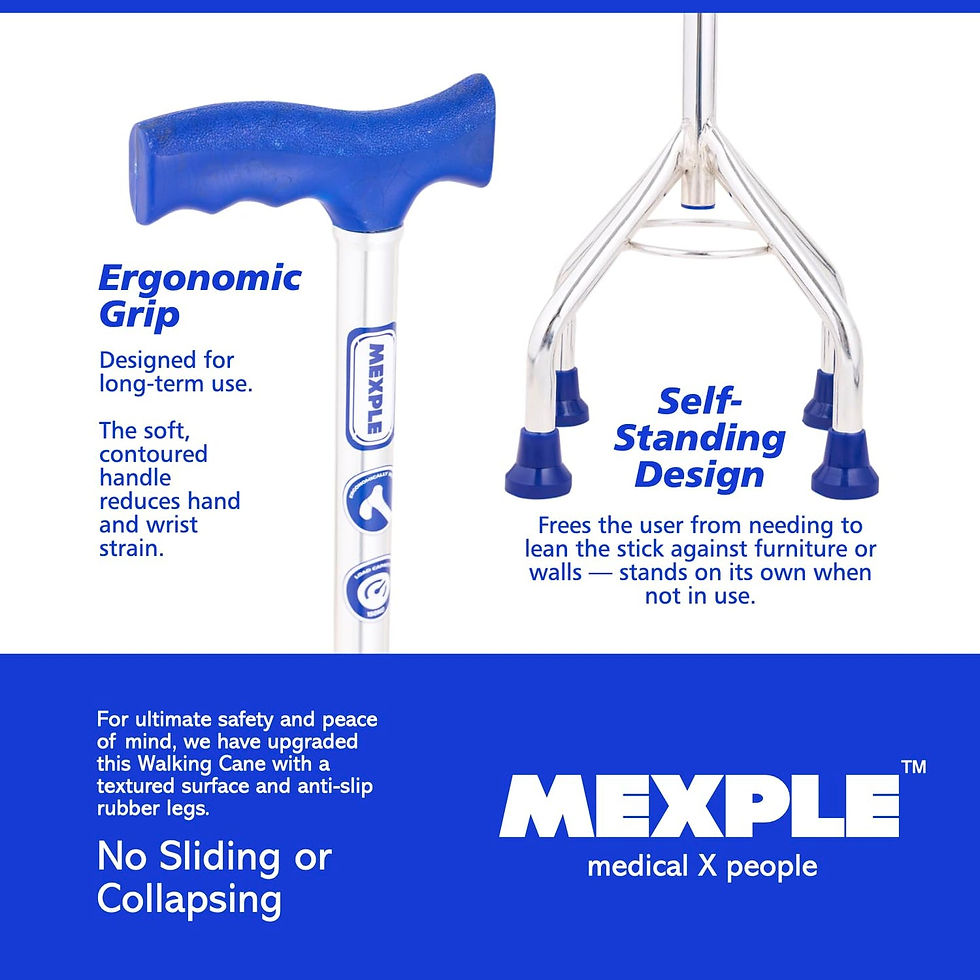How to Use a Bedpan for Elderly Patients at Home (Step-by-Step Guide)
- mexple11
- Jul 3
- 3 min read
Updated: Jul 9
Caring for elderly patients at home often involves addressing personal hygiene and mobility challenges. One of the most crucial and delicate aspects of caregiving is assisting with toileting needs, especially when the individual is bedridden or has limited mobility. In such situations, a bedpan becomes an essential tool, offering comfort and dignity to the user while ensuring hygienic waste management. In this guide, we walk you through the proper and safe way to use a bedpan for elderly patients at home.
What is a Bedpan?
A bedpan is a medical device designed to collect urine or feces from individuals who cannot access a regular toilet due to illness, injury, or aging-related mobility limitations. Made from materials like stainless steel or plastic, bedpans come in different shapes and sizes to suit user comfort and needs. They are widely used in hospitals, nursing homes, and home care settings.

Why Bedpans Are Important for Home Care
Using a bedpan offers several benefits:
Maintains hygiene when mobility is limited
Reduces risk of falls and injuries from trying to reach the toilet
Preserves dignity and independence for elderly users
Convenient for caregivers in managing toileting needs without patient transfer
Supplies You Will Need
Before you begin, gather the following:
A clean bedpan (plastic or stainless steel)
Disposable gloves
Bed protector or waterproof sheet
Toilet paper or wet wipes
Bedpan cover or lid (if available)
Soap and water or hand sanitizer for hand hygiene
A towel for patient comfort and cleanliness
Waste disposal bag (for used tissues or wipes)
Step-by-Step Guide: How to Use a Bedpan at Home
Step 1: Prepare the Environment
Make sure the room is warm, well-lit, and offers privacy to the user. Explain the process to the elderly patient to make them feel comfortable and less anxious. Keep everything you need within arm’s reach.
Step 2: Position the Patient
If the patient can move with minimal assistance:
Ask them to roll onto one side (preferably their side of strength).
Slide the bedpan gently under their buttocks.
Help them roll back onto their back so they sit evenly on the bedpan.
If the patient cannot move on their own:
With two caregivers (if possible), gently lift the hips using the draw sheet or one caregiver supports while the other places the bedpan.
Ensure the bedpan is positioned correctly to avoid spills.
Step 3: Ensure Comfort and Stability
Elevate the head of the bed or use pillows to mimic a seated position.
Provide tissues or wipes.
Step out or give them privacy while they use the bedpan, if they are comfortable with it.
Step 4: Remove the Bedpan Safely
Put on disposable gloves.
Ask the patient to roll to the side again.
Gently remove the bedpan while ensuring nothing spills.
Wipe the patient clean using toilet paper or wet wipes.
Cover the bedpan with a lid or cloth temporarily.
Step 5: Dispose and Sanitize
Dispose of waste in the toilet or follow medical waste disposal guidelines if necessary.
Rinse and disinfect the bedpan thoroughly after each use.
Wash your hands and the patient’s hands with soap and water or sanitizer.
Dispose of used gloves and wipes in a waste bag.
Tips for Success
Communicate clearly with the patient before and during the process.
Use barrier creams if the patient is prone to bedsores.
Monitor output if required by a healthcare provider (record color, amount, and frequency).
Keep everything sanitized to prevent infections.
Check for discomfort or signs of skin irritation around the buttocks area.
Choosing the Right Bedpan
There are different types of bedpans:
Standard Bedpans: Ideal for general use; come in plastic or metal.
Fracture Bedpans: Shallower and designed for users with hip or back injuries.
Disposable Bedpans: Made of biodegradable pulp, used once and discarded.
Consider the user’s body type, mobility, and comfort level when selecting a bedpan.
When to Seek Medical Help
If you notice any of the following while assisting with a bedpan, contact a healthcare professional:
Unusual urine or stool color
Pain during urination or bowel movement
Inability to use the bedpan due to discomfort
Signs of pressure sores or skin irritation
Final Thoughts
Using a bedpan may seem challenging at first, but with the right approach, it becomes a smooth and dignified part of elderly care. Always prioritize the comfort and hygiene of the patient. Over time, with practice and empathy, caregivers can make the experience easier for everyone involved.
A clean, well-positioned, and properly used bedpan not only reduces the risk of infection but also gives the elderly person a sense of control and dignity. By mastering this essential skill, caregivers play a vital role in maintaining quality of life for those under their care.
Also check: Tips to Prevent Leakage in Urine Bags




Comments